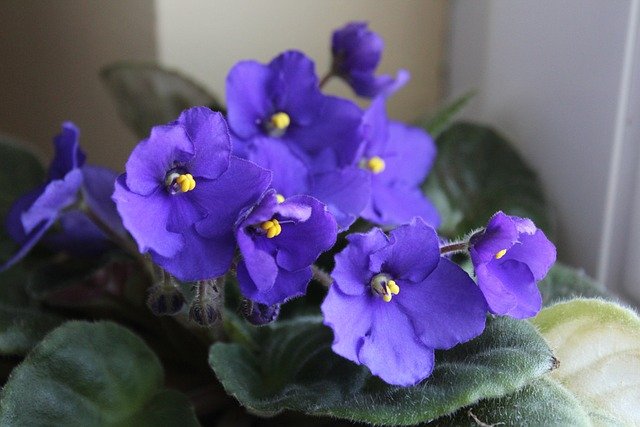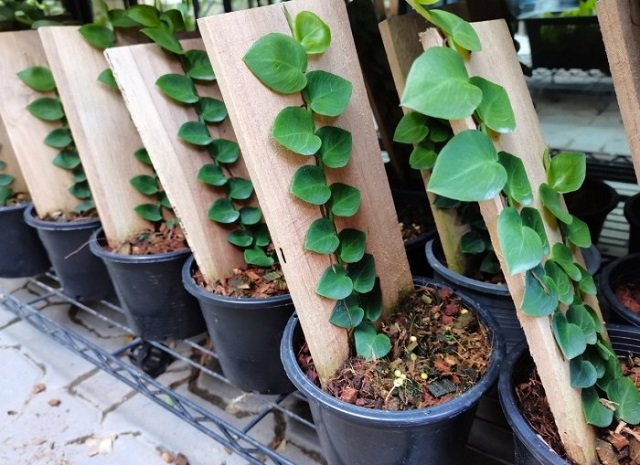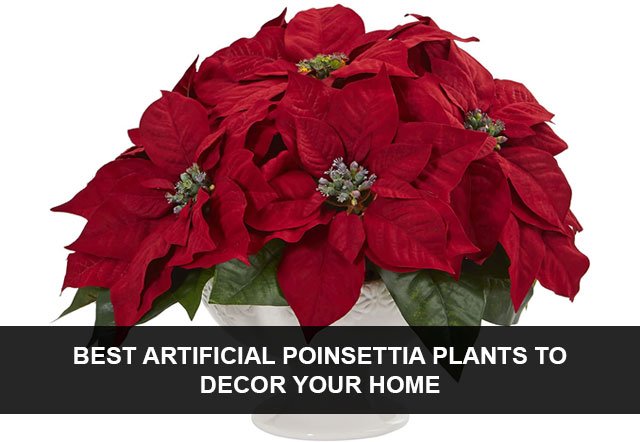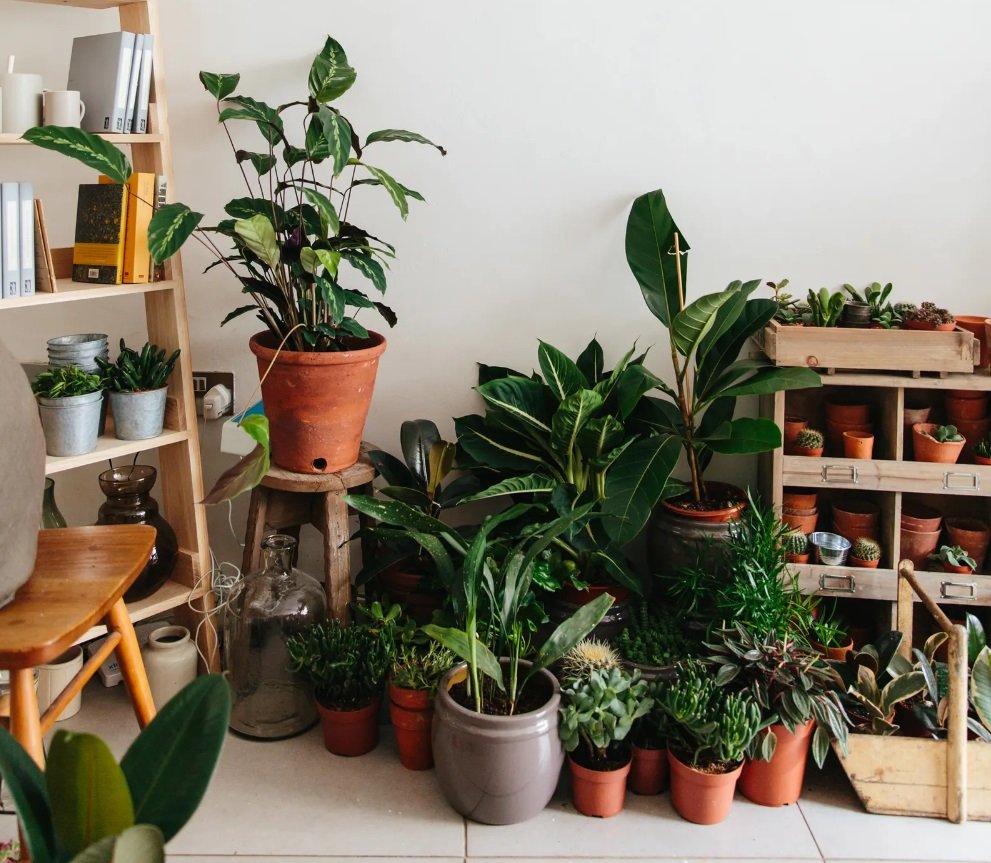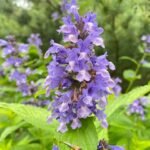Indoor purple leaf plants add style and harmony to the indoor environment with their rich and deep green foliage. The range of colors is extensive, we have deep and royal purples to soft lavender tones, which bring out accents of color and visual interests to any room to create a relaxing and appealing atmosphere. With their various textures and standing-out colors, these purple leaf plants not only serve the function of ornamental flowers but also visually improve the beauty of homes, offices, and indoor gardens.
General Features:
Aesthetic Appeal:
The indoor purple leaf plants make the foliage really tempting as the color ranges from velvety deep purple, resembling royalty, to softer shades of lavender. Each of the layers displays its distinct color or texture contributing to the aesthetics of the interior spaces. Whether massed together or placed fly-leaf, these plants give a feeling of comfort and elegance that can elevate the ambience of any room.
Versatility:
Among the many outstanding features of indoor green-leaved plants is their versatility. Their multiple forms, diameters, and growth habits allows them to grow nearly anywhere that indoors. Be it sitting on a window sill to bathe in the sunshine or placed on the flat surface as decoration or hung from the ceiling to add the vertical interest, indoor purple leaf plant will blend in every interior design, giving the space a new look and life.
Low Maintenance:
For most of the indoor plants of Purple leaf variety, they are sought after for their low-maintenance characteristics and won’t require much attention to be able to grow well. Such plants are very adaptable and can tolerate a variety of light conditions ranging from bright indirect to lowlight conditions. They also can survive in humidity variations. These plants are durable since they tolerate indoor conditions including lower light levels and need less attention thus, they are appropriate for both the experienced and novice gardeners.
Air Purification:
Apart from their aesthetic look, purple leaf plants have even more advantages. Purple leaf varieties might not be the typical indoor plants, but it also provides a contribution in air purification by absorbing harmful pollutants like formaldehyde, benzene, and xylene through the leaves and providing oxygen through photosynthesis. The natural cleaning of the air that happens in addition improves the quality of the indoor air. It can also lead to healthier living or working conditions for the occupants, hence benefiting their well being.
Mood Enhancement:
The indoors plants with purple leaves have been demonstrated to improve mood and psychological health. The soothing and refreshing effect that is generated by the large number of green plants and their colorful canopies promote relaxation and creative thought and help reduce psychological stress. Whatever the indoor location, be it the living room, bedroom, or even the office, the large and deep indigo beautiful foliage purple leaf plants serve the purpose of being a natural mood enhancer. These plants convert a place into oasis for relaxing and entertaining even in the noise and bustle of the day-to-day living.
Adaptability to Décor Styles:
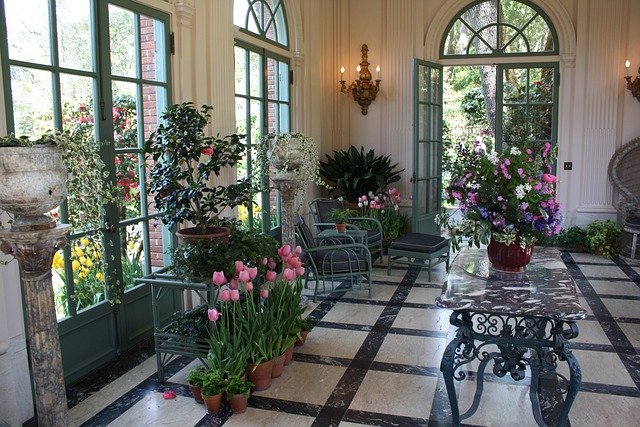
As indoor purple leaf plants go well with a variety of interior themes ranging from modern and minimalist to traditional and eclectic, they can fit into any décor. The greenery of the walls adds a certain level of elegance of the contemporary spaces. The flexibility of their design allows them to be integrated into a more traditional setup or a setup that would mix the different styles. May be employed either as bold statements or quiet accents, indoor purple leaved plants lift the look of any indoors, with added character and personality charm.
Let’s go forward, shall we, on our voyage onto the types of indoor purple leaf plants. Their attractive colors, adaptability to different conditions, and ability to create lovely atmospheres are among the many benefits of growing purple leaf plants indoors. Purple leaf plants will do an excellent job of bringing beauty and tranquillity to any home or office, when grown indoors. Whether they provide attractive ornamentation, purify air or uplift mood, these plants create a sense of peace and tranquillity in the space inside, thereby forming a place of solace and enjoyment amidst the stress and turmoil of life.
Purple Heart (Tradescantia pallida):
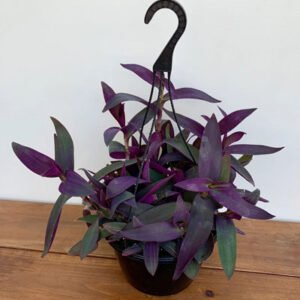
Purple Heart (Tradescantia pallida) is a popular perennial plant that is famous for its brilliant foliage and its care-free nature. First originating from Mexico, this plant species has drawn gardeners and plant admirers across the globe with its attractive, purple-colored foliage and feminine pink flowers. As a surprisingly adaptive plant the Purple Heart meets the requirements of both indoor and outdoor growing because of its low maintenance. However, its functionality is not limited to aesthetics as it provides countless environmental and human welfare benefits.
Majestic Features of Purple Heart:
- Vibrant Foliage: An additional feature of Purple Heart is the grabbing foliage in with different shades of purple, adding theatrical effects to every garden.
- Easy Propagation: This plant can be propagated effortlessly via stem cuttings so that it can be shared with friends as well as expanded in your garden.
- Drought Tolerance: Purple Heart offers to tolerate drought very well as it grows without the need of much watering in dry conditions.
- Low Maintenance: Having the potential to grow in numerous soil types and light conditions, Purple Heart does not need to be kept to the standards that many plants have. Hence, this plant is both suitable for developing gardeners and gardeners with various gardening experiences.
- Attracts Pollinators: The dainty small pink flowers of the Purple Heart plant seem to bring pollinators like bees and butterflies as well as other insects to the garden, increasing the biodiversity of the garden ecosystem.
User-Friendly Features:
- Adaptability: Purple Heart is successful in both indoors and outdoors, making it well suited for container cultivation, basket displays or beds.
- Indoor Decor: Purple Heart’s vibrant leafage makes it a wonderful choice for indoor decoration that would cheer up the indoor spaces and offices.
- Easy Care: This species of plant is not very demanding with respect to its requirements such as occasional watering and just sufficient light and hence, it is a perfect option for people with very busy schedules.
- Pest Resistance: Purple Heart is generally resistant to pests and diseases; thus, chemical treatments are not generally necessary to ensure a healthier and safer garden.
- Year-Round Interest: Having golden-brown leaves and flowers in late spring, Purple Heart gives off an incredible color to the landscape all through the year.
Irritating Features:
- Invasive Growth: Purple heart does not settle for just a spot in the garden, but tries to establish a monopoly, and drive other plants away.
- Sensitivity to Frost: Purple Heart is tolerant of drought but is frost sensitive. Exposure to frost may damage the plant in areas with colder climes and protection is recommended.
- Limited Flowering: Even though its leaves show beautiful as well as striking hues, Purple Heart has very few flowers for a short while followed by intermittent blooming all through the growing season.
- Soil Requirements: It is also ideal for well-draining soil and may not thrive in poorly drained or compacted conditions, necessitating extra care during soil preparation.
- Toxicity: Pets and children are at risk for toxicity if purple heart is ingested because the compounds it contains are poisonous. Removing this from reach is advisable.
Conclusion:
The Purple Heart is an eye-catching selection for outdoor spacing as well as indoor space due to its breathtaking foliage, and it is easy to care for. Moreover, it has several advantages that make it unique. Although it has been found that some gardeners may face certain challenges due to its tendency for invasion and its vulnerability to frost, its beauty and its versatility make it a wonderful choice for gardeners who want an unusual and a low-maintenance plant. The everlasting elegance and magic of Purple Heart make it worth taking good care of and paying attention to, so it can still enchant and delight gardeners even more in the years to come.
Purple Waffle Plant (Hemigraphis alternata)
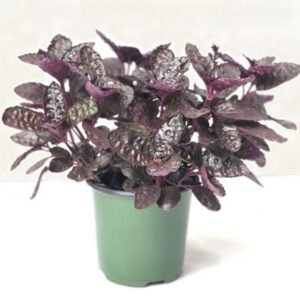
Purple Waffle(Hemigraphis alternata) is the amazing foliage plant alluring for the purple-tinted leave enriched with peculiar texture. Originating from the tropics, this species has found favour among indoor plant enthusiasts for its aesthetic appeal and sturdiness to cultivate. Featuring its small size and multifunctional growth habits, the Purple Waffle Plant, this indoor plant surely completes any space, becoming the much-loved choice for both beginner and expert plant lovers.
Majestic Features of Purple Waffle:
- Vivid Purple Foliage: The most noticeable part of Purple Waffle Plant is its bold purple foliage, not only does it adds color to any surrounding but also creates a visual interest from every angle.
- Waffle-like Texture: The leaves of this plant are intriguing as they resemble the texture of waffle with the added advantage of creating depth and dimension, thus improves its aesthetic qualities.
- Compact Growth Habit: Due to its dwarf and bushy growth pattern, Purple Waffle Plant is great for growing on tabletops, shelves, or in terrariums with limited space.
- Easy Propagation: Propagating the Purple Waffle Plant is a simple and straightforward task because the plant readily produces new plants from stem cuttings and so increase the number of plants to be included in your collection is not a complex task.
- Low Light Tolerance: This shrub has the ability to grow in low light, which makes it a good selection for offices and inside spaces where there is little natural light.
User-Friendly Features of Purple Waffle:
- Low Maintenance: Purple Waffle Plant, an easy-care houseplant that flourishes in conditions with equal distribution of water and fertilization, will remain green and shiny.
- Indoor Adaptability: This plant’s capability to survive indoors is the main contributing factor in making it an ideal species for including it inside the homes, offices, and other indoor settings.
- Air Purification: Similar to many other indoor plants, Purple Waffle Plant works towards improving the indoor air quality by eliminating harmful toxins and hazardous pollutants, thereby creating a more hospitable and healthier ambiance inside.
- Pet-Friendly: Dogs and Cats tend to avoid this non-harmful plant for their owners’ comfort, when decorating home with plants.
- Long-lasting Foliage: Once planted the Purple Waffle Plant maintains its brilliant colorful leaves, making a throughout yearlong decoration and enjoyment.
Irritating Features of Purple Waffles:
- Susceptibility to Overwatering: Purple Waffle Plant is subject to root rot in case of over-watering, so it is important to let the soil to dry before you water it to avoid over moisture problems.
- Temperature Sensitivity: Rapid shifts in temperature is a result of stress to the Purple Waffle Plant. There might be leaf drops or discoloration, depending on exposure to drafts and extreme heat.
- Pest Vulnerability: Normally not affected by pests, Purple Waffle Plant is however the one that attracts common indoor pests, such as aphids and spider mites, hence the preventive measures have to be taken in time.
- Limited Flowering: Pink Waffle plant, even though it flowers tiny and elusive flowers, its main ornamental value is derived from its colorful foliage rather than blooms.
- Sensitive to Chemicals: Purple Waffle plant is vulnerable to damage caused by chemical fertilizers and pesticides overdose or misuse. It displays leaf burn when exposed to excessive amounts or where and how applied are incorrect.
Conclusion:
To summarize, Purple Waffle (Hemigraphis alternata) is a delightful and hassle-free indoor plant for green lovers and interior designers. The plant is subject to overwatering and is temperature sensitive but its vibrant purplish foliage, ease of maintenance and adaptability make it one of the favorites of houseplant collectors looking to lend a touch of natural aesthetics to their indoor or office scope. If taken care of well and its conditions maintained, Purple Waffle Plant will keep on pleasing and attractive with its unique looks and ornamental qualities, bringing in beauty and charm to any interior or to any outside space.
Purple Velvet Plant (Gynura aurantiaca)
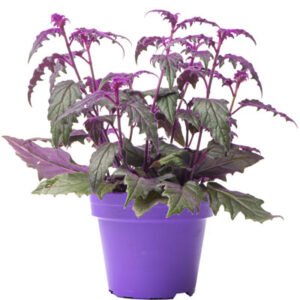
Purple Velvet Plant (Gynura aurantiaca) is an alluring houseplant that is popularly admired due to its velvety purple leaves and its appeal. This plant species are indigenous to the Southeast Asia region and have become an indoor gardener favorite as it is ornamental and easy to take care of. Its striking foliage, compact growth habit, and vivid appearance make Purple Velvet Plant a great option for anyone looking to add either simple sophistication or just elegance to their indoor environment, hence its popularity with both beginner and experienced plant enthusiasts.
Majestic Features of Purple Velvet Plant:
- Velvety Purple Leaves: The main thing that distinguishes this plant is that it has a thick velvety texture and is deep in purple color, which makes it a very pleasant plant to look at.
- Contrasting Orange Undersides: The veins of the leaves form a highly recognizable dark purple pattern which flows like a river on the lighter colored upper sides. The lower sides of the leaves are strikingly orange which provides a powerful contrast to the upper sides and greatly enhances the overall visual quality of the plant.
- Trailing Growth Habit: The resulting habit of the Purple Velvet Plant is usually trail-bred or cascading, which makes it very suitable for the hanging baskets or elevated planters where its leaves can be hanging.
- Easy Propagation: As far as its propagation is concerned, this plant is very easy as it readily produces new plants from stem cuttings, therefore, growing your collection of this plant becomes a piece of cake.
- Air Purification: Purple Velvet Plant, like a number of other indoor plants, provides filtration of air by removing the toxins and pollutants from the environment allowing the users to enjoy a higher air quality.
User-Friendly Features of Purple Velvet Plant:
- Low Maintenance: Purple Velvet Plant is a low-maintenance plant, requiring a decent amount of watering and occasional fertilization, therefore making it suitable for busy people or gardens started by people with limited experience in gardening.
- Indoor Adaptability: This plant is very suitable for use indoors because of its ability to adapt to indoor environments. Consequently, it makes it a great option to use in home decor, offices or any indoor space.
- Tolerant of Indoor Conditions: This plant is suitable for all sorts of indoor conditions, from broad sun coverage to humid environments with only different lighting and humidity levels.
- Pet-Friendly: The Purple Velvet Plant is generally not harmful to pets, thus guaranteeing that pet owners who desire to have plants as part of their indoor design do not need to be worried about their animals.
- Long-lasting Foliage: If it is well-cared for, Purple Velvet Plant should retain its rich, luxurious appearance for as long as possible, giving way to an extended duration of enjoyment.
Irritating Features of Purple Velvet Plant:
- Susceptibility to Overwatering: Purple velvet plant is vulnerable to the root rot if over-watered, such that the soil should be left dry between waterings to avoid the moisture related problems.
- Sensitive to Cold Temperatures: Plants of this variety become more vulnerable to stress caused by a dramatic decrease in air temperature or from rapid drafts and they get damaged by leaves discoloration or injury.
- Pest Vulnerability: Though usually free of pests, the indoor-purple velvet plant can draw common household pests such as aphids or spider mites, therefore pest management should be conducted regularly in order to prevent infestations.
- Fragile Leaves: The leaves of the Purple Velvet Plant are soft and fragile, and they might break off easily if handled roughly, are exposed to strong winds or any chance hits.
- Limited Flowering: Purple Velvet appears to be a small plant with unnoticeable flowers; however, it is the velvety leaves that while being the main ornamental feature is more appealing than flowers.
Conclusion:
In the end, a beautiful and manageable Purple Velvet Plant (Gynura aurantiaca) is well suited to grow indoors, either in gardens or as houseplants. Although it tends to face the problem of over-watering and is sensitive to the cold, the purple leaves of this plant coupled with the ease of its care and its adaptability makes it a classy choice for indoor plant lovers looking to add a touch of elegance and refinement to their surroundings. The trailing growth arrangement and air purifying properties of this cultivar make Purple Velvet Plant even more spectacular and enlivening, beautifying, and modernizing any indoors with its abundance of leaves and mystery.
Purple Passion Plant (Gynura sarmentosa)
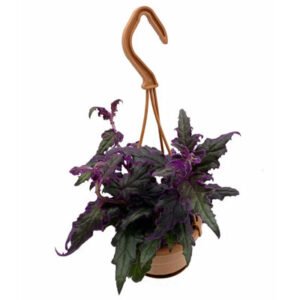
Purple Passion Plant (Gynura sarmentosa) is an open-handed tropical vine praised for its extraordinary deep-green foliage. Coming from the Southeast Asian region, this species has gained the interest of indoor gardeners for its aesthetic characteristics, fairly simple and low maintenance. With its trailing growth habit and vivid purple leaves, Paves the way for it to get attention of people who use it, either novice or experienced plant lovers.
Majestic Features of Purple Passion Plant:
- Rich Purple Foliage: The magnificent purple passion plant is marked by lush foliage in deep purple hues producing a breathtaking visual display.
- Velvety Texture: The texture of these leaves is velvety which greatly adds to its overall charm and makes it more attractive to touch.
- Trailing Growth Habit: Normally, the Purple Passion Plant exhibits a trailing or cascading growth habit, therefore, planters, containers without walls, and buckets are most ideal for it.
- Unique Leaf Shape: The leaf of a Purple Passion is slender and lanceolate in shape, which makes it more visible as well as complementing the plant’s unique looks.
- Easy Propagation: The process of propagating Purple Passion Plant is simple since it grows quickly from cut stem sections and thus it is easy to create more Purple Passion plants for your collection.
User-Friendly Features of Purple Passion Plant:
- Low Maintenance: The Purple Passion Plant is one of the easy-to-care garden plants, and it needs moderate watering and an average of light for it to flourish, making it best for people who are new are in gardening or the busy individuals.
- Indoor Adaptability: Indoor adaptation is its adaptability that makes it is an excellent choice to add color and texture to houses, offices and other indoor areas.
- Tolerant of Indoor Conditions: this plant can adapt to many indoor conditions, such as differing light and humidity levels, making it useful for different indoor places.
- Air Purification: Similar to other indoor plants, Purple Passion plant too helps in air purification by removing toxins and pollutants found in the room and thereby promotes clean indoor air.
- Pet-Friendly: The Purple Passion Plant is a plant which is considered non-toxic to pets, giving the pet parents reassurance as they can incorporate plants into their indoor environments without having to worry about their pet companions.
Irritating Features of Purple Passion Plant:
- Susceptibility to Overwatering: Purple Passion Plant, if over watered, suffers from root rot, consequently, the soil must be allowed to dry between another watering cycle to avoid moisture related problems.
- Sensitive to Cold Temperatures: Sudden temperature falls, or cold drafts may injury the Purple Passion Plant, causing stains or discoloration of the leaves.
- Pest Vulnerability: Purple Passion Plant has a broader resistance to pests. However, it still can be infested by common indoor pests like aphids and/or spider mites more likely, and thus need to be kept under watchful eyes on pests all the time to overcome infestation.
- Fragile Leaves: Purple Passion Plant leaves are tender and may tear if handled roughly or if exposed to sharp winds or slight bumps.
- Limited Flowering: Even though the Purple Passion Plants have tiny and unassuming flowers, its main ornamental charm consists of its luxuriant leaves, rather than its blooms.
Conclusion:
In the end, Purple Passion Plant (Gynura sarmentosa) becomes a wonderful option for our indoor plants and living spaces. In spite of that it is leaky watering and sensitive to cold temperatures, its refined purple leaves, easy-care and adaptability make it an interesting plant for house enthusiasts who seek to beautify their space adding a touch of some exotic beauty. The growth pattern with the enchanting qualities of this plant allows it to trail and purify the air, finding its niche of any indoor space with its lush foliage that leaves everyone in awe.
Purple Shamrock (Oxalis triangularis)
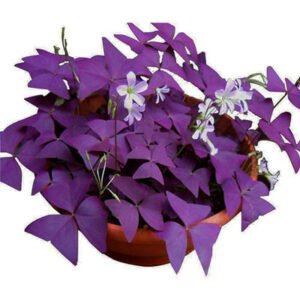
The Purple Shamrock (Oxalis triangularis) is a fairy-like perennial plant that is extremely decorative due to its exuberant purple foliage and little triangular leaves. Mauro was named after the country of its birth-Brazil. This species has gained a lot of attention across the globe for its ornamental qualities and unique features. Shaped by its compact growth habit, and simplicity of maintenance, Purple Shamrock gives a gentle and imaginative feeling to the outdoors, containers, and indoor spaces, and is favorite of both the amateur and the experienced gardeners.
Majestic Features of Purple Shamrock:
- Vibrant Purple Foliage: The unusual aspect about the variety Purple Shamrock is the fact that it has purple leaves that will provide a strong contrast with any other plants, whether indoor or outdoor.
- Triangular Leaves: What is even more interesting is the shape of its leaves that is unique: like triangles. Thus, one can always notice this plant and can use it as a great accent in any landscape.
- Attractive Flowers: The flower of red shamrock is a Shetty pinkish colour and it blossoms all the time throughout the season, displaying the flower’s delicate beauty.
- Tolerant of Shade: It has ability to live in partial shade to full sun therefore it could adjust to a wide range of light conditions and can be used to create different types of gardens.
- Easy Propagation: With its easy propagation, Purple Shamrock produces progenies from bulbs or tubers, which makes it a plant of choice for many growers who want to have a collection of the plant.
User-Friendly Features of Purple Shamrock:
- Low Maintenance: Purple Shamrock is extremely manageable and needs to be watered occasionally and fertilized periodically in order to flourish, which makes it suitable for those whose lifestyle is busy or beginners in gardening.
- Indoor Adaptability: Its adaptability to indoor environment makes Purple Shamrock a common choice to add colors and texture to be as versatile as homes or workplaces.
- Drought Tolerance: Once it is established, the plant shows excellent drought tolerance, so it is well adapted to areas with a dry or arid climate and needing irrigation a few times a year only.
- Pet-Friendly: Purple Shamrocks are pet-safe plants, a boon to indoor pet owners looking to add greenery to their spaces without worrying about their pets.
- Long Blooming Period: The purple Shamrock also has a relatively extended period of flowering offering continuous color and interest in the gardens throughout the growing season.
Irritating Features of Purple Shamrock:
- Invasive Growth: The relative aggressive behaviour of the purple shamrock makes it invade constantly, having a possibility to become invasive and suppress other plants.
- Sensitive to Overwatering: Overwatering results in root rot as well as other moisture-related problems on Purple Shamrock and thus watering must be done only in between dry periods of time.
- Dormancy Period: It may enter a dormancy phase in winter when it goes shed off its leaves, to remain as seemingly deciduous, and for you to be patient as the new growth would emerge in spring.
- Sensitive to Frost: The frost- sensitive Purple Shamrock means that lower temperatures require to use a cover or to bring it indoors in a cold climate.
- Potential for Oxalic Acid: Other people may have skin itchiness or digestive problems because of the handling and eating of Purple Shamrock due to its oxalic acid.
Conclusion:
By way of summary, the Oxalis triangularis is one of the flowers that can hardly be ignored when we want to brighten a garden or create a homely environment. Although it may be invasive and prone to overwatering, the stunning purple leaves, along with-it capability of growing indoors makes it an ideal choice for those who appreciate plants and colors and are willing to experiment with different plants. It is difficult to forget the charming triangular leaves and long blooming of Purple Shamrock which continues to hold the Indiana my heart and makes every landscape and any indoor environment glow with its exceptional beauty and vibrant presence.
Purple Persian Shield (Strobilanthes dyerianus)
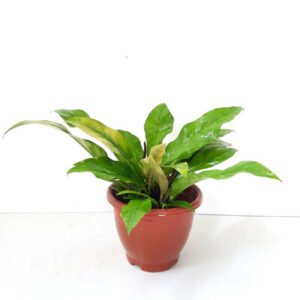
The Purple Persian Shield (Strobilanthes dyerianus) also known as the Strobilanthes plant is simply breathtaking with its vibrant purple foliage and ornamental value. This species is endemic to Myanmar and now gardeners love it for its bright color shade and strange look. Growing the Purple Persian Shield with its large, iridescent leaves and compact growth habit, one can make any garden or container look tropical or add a new element of beauty to indoor spaces, thus making it a much-desired plant among the beginner and a seasoned garden enthusiasts alike.
Majestic Features of Purple Persian Shield:
- Iridescent Purple Foliage: The distinguishing characteristic of the Purple Persian shield is its vibrant purple leaves which keep a shiny appearance, adding an eye-catching element to any environment.
- Large Leaves: This plant that has large lance-shaped leaves displays obvious veins that makes it really eye-catching for the garden or the interior.
- Year-Round Color: Purple Persian Shield can be grown as an evergreen hedge and thus provide continuous color and interest in the landscape or indoors throughout the year.
- Versatile Use: Whether it is used as a ground cover at garden beds edge, as a backdrop to other plants, or as a focal piece in pots, the Purple Persian Shield guarantees to create an instant glamorous and dramatic atmosphere in any space.
- Easy Propagation: Propagation of Purple Persian Shield is not difficult, and you can propagate it from cuttings, which allows you to try new plants without much effort.
User-Friendly Features of Purple Persian Shield:
- Low Maintenance: Medium Maintenance is a nice feature of this plant, does not require as much attention after establishment, thus making it appropriate for active people who do not have a lot of time for caring or for beginners in gardening.
- Drought Tolerance: This plant is known for its good drought tolerance once established, therefore suitable for arid or dry climatic conditions with little watering.
- Indoor Adaptability: The Tropical Purple Persian Shield can be grown indoors as a houseplant. This can bring the beauty of color and the spirit of a tropical setting to homes, offices, or other indoor areas.
- Pest Resistance: The plant is resistant to pest and disease attack, thus reducing the need for chemical treatments, assuring the health of the garden basin.
- Fast Growth: Vigorous and fast-growing, Purple Persian Shield rapidly colonizes garden spots or containers into one overall sweep, therefore, appealing to gardeners for instant gratification.
Irritating Features of Purple Persian Shield:
- Sensitivity to Cold: Purple Shield Persia is subject to cold weather and frost damage and therefore needs to be protected by bringing it indoors during the winter when the temperature is below freezing in the climate zones with frost.
- Invasive Growth: Under favorable conditions, Liriope muscari (Purple Persian Shield) can invade other plants aggressively, end up being invasive and when allowed to go unchecked.
- Leggy Growth: Without adequate pruning, the variety of purplish Shield Persian may become floppy over time and cannot keep the compact form and beauty which it is famous.
- Root Bound: The plant might be root-bound in case it is not re-potting regularly, which will result in stunted growth and declining vigor.
- High Light Requirements: A proper lighting, bright and indirect, is mandatory for Blue Fescue and if it is placed in the poorly lit area, it may experience problems growing.
Conclusion:
To sum it up, Purple Persian Shield (Strobilanthes dyerianus) is definitely a majestic and user-friendly plant both in gardens as well as indoors. As it is very sensitive to cold temperatures and even can become invasive, it is flowering purple leaf and very low maintenance, and it is often desired plant element for gardener who wants to give tropical touch to their gardens or indoor decoration. Bright Purple Persian Shield remains a prime choice ever since with its evergreen color and carefree nature, constantly surprising and delighting even the most demanding among our plant lovers, adding its distinct brightness to the overall atmosphere wherever it is used.
Purple Velvet Vine (Gynura pseudochina)
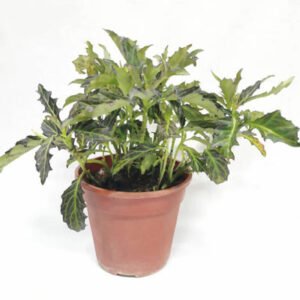
The Purple Velvet Vine (Gynura pseudochina) is a mesmerizing vining plant due to its rich velvet purple foliage and unique texture. From Southeast Asia, this species has appealed to gardeners based on its ornamental characteristics and fairly low care demands. Sia drift will elevate the beauty and theatrics of the garden terrace, indoor or outdoor units, as well as balcony baskets with its stunning purple leaves of soft velvety texture.
Majestic Features of Purple Velvet Vine:
- Velvety Purple Foliage: What makes the Purple Velvet Vine unique is that the leaves are a deep purple shade and hence give a feel of pure and luxury when you look at the display.
- Trailing Growth Habit: The plant is precisely known for its tendency towards a trailing or cascading growth habit and therefore is especially suited for hanging baskets and elevated planters. The foliage of this plant can be seen gracefully draping over.
- Unique Texture: With an appealing velvety texture, the Purple Velvet Vine’s leaves become even more alluring and make it simply impossible not to touch them.
- Contrasting Green Undersides: The green shade underneath the leaf gives it a contrast and a look to match the dark purple of the topside.
- Tolerant of Indoor Conditions: Purple Velvet Vine has the ability to grow in interior spaces where it flourishes in bright, indirect light, and medium humidity.
User-Friendly Features of Purple Velvet Vine:
- Low Maintenance: Purple Velvet Vine is not the kind of vine that you have to keep checking on all the time. Occasional watering and a dose of liquid fertilizer now and then is enough to keep it healthy. Thus, it is a good option for busy people or beginners who are getting acquainted with gardening.
- Indoor Adaptability: The flexibility of Purple velvet vine to grow in the indoor environment makes it a very versatile option to brighten up homes, offices or other indoor places with colors and texture.
- Easy Propagation: Propagating the Purple Velvet Vine is simple, since it creates stems that easily grow into new plants, thus enabling additional plants to your collection.
- Drought Tolerance: This plant is drought tolerant after being established which makes it feasible for use in climates with a dry or arid nature requiring little irrigation.
- Air Purification: Similar to many indoor plants, the Purple Velvet Vine assists in purifying the air by removing harmful toxins and pollutants the surrounding environment, making the air indoors better.
Irritating Features of Purple Velvet Vine:
- Susceptibility to Overwatering: The root-rot susceptibility of the Purple Velvet Vine is due to overwatering, hence, making it essential to allow the soil to dry out before the next watering session lest moisture-related problems crop up.
- Sensitive to Cold Temperatures: Unpredicted temperature drops or exposure to cold winds may cause some stress to Purple Velvet Vine, which in turn, may result in leaf damage or change the color.
- Pest Vulnerability: Although spared by general pests, Purple Velvet Vine has a possibility of attracting indoor pests like aphids or spider mites and pest management should be active along the way just not to be infested by them.
- Fragile Leaves: The leaves of the fragile Purple Velvet Vine are susceptible to damage if they are accidentally knocked if there are strong winds or if they are handled roughly.
- Potential for Allergic Reactions: Others could have skin inflammation or allergic reaction if they encounter with this plant. This could be noticed also on people who have allergic or sensitive skin.
Conclusion:
Purple Velvet Vine (Gynura pseudochina), in the end, is an elegant and friendly variety that deserves a place in gardens and indoors. Disregarding its vulnerability to overwatering and intolerance to cold temperatures, the plush purple leaves, the low-maintenance, and the ability to adapt in different environment makes it an alluring choice for plant-loving individuals attempting to landscape their space with the addition of some elegance and drama. Purple Velvet Vine, distinguished for its spreading growth habit and air-purification capabilities, maintains to seduce, and enthrall, infusing any setting with its opulent leaves and unique beauty.
Purple Oxalis (Oxalis triangularis ‘Purple Shamrock’)

The Purple Oxalis (Oxalis triangularis ‘Purple Shamrock’) is a perennial plant, which is often described as “enchanting” due to the beauty of their leaves made of vibrant purple foliage and the shape similar to triangles. This variety of Brazilian origin has become the favorite of gardeners everywhere first due to its beauty and second due to the fact that its maintenance process is not too difficult. Through its unmatched shoot growth and striking purple leaves, Purple Oxalis has a reputation for bringing elegance and cheerfulness to landscapes, patio pots, and homes and so is highly favored by both beginner and experienced gardeners.
Majestic Features of Purple Oxalis:
- Rich Purple Foliage: Purple Oxalis has one prominent trait that is its deep purple leaves which creates a showy exit of color to any garden or inside location.
- Triangular Leaves: The spectacular triangularly shaped leaves of this cultivar further elevate its beauty which will indeed make it a conversation piece in every landscape.
- Year-Round Interest: Purple Oxalis is marked by its staying green throughout the year and brings about a never-ending element of color and interest to the garden or the indoors.
- Easy Propagation: Propagating oxalis with purple silver color is not difficult because it can be grown from bulbs or tubers, thus, your collection of plants will be easily expanded.
- Compact Growth Habit: This plant features a compact growth form, ensuring that it is perfect even in small spaces like tables, shelves, or windowsills.
User-Friendly Features of Purple Oxalis:
- Low Maintenance: The plant Purple Oxalis is not difficult to maintain, so little or no maintenance is needed once established, thus, it is ideal for those who are too busy or those who are new to gardening.
- Indoor Adaptability: Its particular indoors adaptability makes this species Purple Oxalis a multifaceted choice for incorporating color and texture in the home, the office or any other indoor spaces.
- Drought Tolerance: This plant has good drought endurance once it is established, hence, it is suitable for places with dry or arid climate and requiring less watering in the later periods.
- Pet-Friendly: The Purple Oxalis has no toxicity towards pets, offering relief to pet owners who wish to add plants to their indoor space without fearing the safety of their furry companions.
- Long-lasting Foliage: Proper care mean that the color of the foliage lasts for very long time, bringing elegance and freshness all year round.
Irritating Features of Purple Oxalis:
- Sensitive to Overwatering: Purple Oxalis tends to be at risk of the wet root when the soil has been constantly watered, hence the need to allow the soil to dry before watering again.
- Susceptibility to Pests: Although quite not prone to pests, Purple Oxalis may be one of the indoor plants to attract common indoor pests such as aphids or spider mites. Therefore, pests should be controlled proactively to avoid an infestation.
- Sensitive to Temperature: This variety is prone to cold damage, therefore protect her from freezing temperatures of colder areas or bring her indoors during winter.
- Dormancy Period: Should it enter the dormant phase, the Purple Oxalis will shed its leaves and, therefore, look like its dead, and will require a good deal of time before new growth emerges in spring.
- Limited Flowering: Despite having small and unimpressive flowers, the main attraction of Purple Oxalis lies in its distinctive leaves of vibrant color instead of its blooms.
Conclusion:
Overall, the Purple Oxalis (Oxalis triangularis ‘Purple Shamrock’) perfectly fits in both outdoor and indoor landscaping and is very easy to care for. The purple foliage of this plant provides a colorful contrast to the greens of the landscape, while its natural environment ensures that it requires little maintenance and can adapt to a wide range of environments. This makes it a popular choice among passionate plant growers around the world who want to add an element of sophistication to their gardens. Not only is this plant space saving as it has compact growth habit, but it is also pet tolerant which makes it even more popular and an inspiration to many while decorating its foliage and vibrant beauty adds a refreshing touch to any setting.
Purple Coleus (Solenostemon scutellarioides)
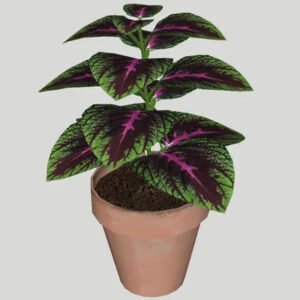
Purple Coleus (Solenostemon scutellarioides) is an eye-catching ornamental plant that has earned the reputation of being one of the most colorful and attractive plants in the garden thanks to its bright purple foliage and appearance. A native of tropical regions, this one has really stood out among amateurs for its rich color and simplicity of culture. Its dense, bushy leaves may be green or purplish with a bold coloring that has made it the favorite plant for both amateurs and professionals in garden aesthetics.
Majestic Features of Purple Coleus:
- Vibrant Purple Foliage: The most outstanding characteristic of the plant is the purple leaves which provide a bold and vibrant touch either in a garden or in a landscape setting.
- Variegated Patterns: Some of the more intriguing varieties of the Purple Coleus have variegated patterns which are of great appeal and increase interest that are exhibited on their leaves.
- Large Leaf Size: Usually, this plant is rich in large and broad leaves which create sufficient coverage and are dense to give the impressive look in beds or containers.
- Contrasting Color Combinations: The Purple Coleus is an eye-catching addition in any mixed container or border, giving amazing contrast in combination with green, yellow, or white flowers.
- Continuous Color: Classifying the plant as a purple variety, Coleus can stay with its colorful foliage throughout the season making it a great option for landscapes or gardens.
User-Friendly Features of Purple Coleus:
- Easy to Grow: Purple coleus is pretty easy to grow; it tolerates different types of soil and lighting which makes it ideal for green hands and experienced gardeners.
- Versatile Use: The plant could be used in a number of ways, such as for bedding, ground cover or edging of borders, containers or even in mixed plantings, thereby reducing the input cost and tourism, bringing a new touch to the management of gardens.
- Low Maintenance: Purple coleus needs little care after the planting, except for normal watering and seasonal feeding.
- Fast Growth: This spectacular growth spurt of Purple Coleus makes it an ideal choice for filling in garden spaces or containers as it fills the area instantly providing gardeners with colorful elation.
- Propagates Easily: Propagating Purple Coleus is very easy, as it is readily producing new plantlets from the stem cuttings and the collection will be very rapidly enlarged.
Irritating Features of Purple Coleus:
- Susceptibility to Sunburn: On sunny days, the Coleus may suffer from sunburn if placed in direct sunlight for long periods and this can result in leaf scorching or fading of the foliage color.
- Sensitive to Overwatering: Overwatering can thus result in root rot and other problems related to moisture in terms of Purple Coleus, hence the need to allow the soil to dry between waterings.
- Prone to Pests: Although being moderately resistant against pests, the Purple Coleus sometimes may attract common garden pests such as aphids, mealy bugs, or spider mites, which may require pest management issues from time to time.
- Leggy Growth: In case of poor pruning the budding of Purple Coleus will progress, lagging behind and getting leggy like plant losing its aerial compactness and ornamental beauty.
- Limited Cold Tolerance: Purple Coleus is frost sensitive and are prone to damage due to cold weather. Thus, protection or bringing indoors is required in colder climates.
Conclusion:
The outstanding feature of purple coleus (Solenostemon scutellarioides) is that it can add the majesty and practicality to a garden, container, or landscape. Nonetheless, adverse effects on sunburn and water overuse do not cease this plant from having its purple foliage, its versatility, and its adaptability make it a must for gardeners who intend adding color and drama to outdoor spaces. Despite its steady hue, quick growth rate, and easy propagating abilities, this plant keeps drawing and inspiring, turning any garden or landscape into a lush and captivating environment with colorful leaves.
Purple African Violet (Saintpaulia spp.)

The Purple African Violet (Saintpaulia spp.) is one of the most loved, flowering plants which is noted for its small size and exquisite blooms. originated in eastern Africa, this species has become renowned in the indoors gardening due to its ornamental value and simple maintenance. The beauty of the flowering character is the charm of the purple flower with dense green leaves of the Purple African Violet which makes it an ideal decoration of windowsills, tables, gardens and other indoor spaces. It is particularly appreciated by both the beginners and the aficionados of the plant world.
Majestic Features of Purple African Violet:
- Abundant Purple Blooms: Foundational trait of the species is its profuse clustering of purple flowers which bloom extensively and present a magnificent showing of color
- Varied Bloom Shapes: The blooms can be either single, double, or ruffled, and their variety ensures a lot of diversity and eye-pleasant forms.
- Compact Growth Habit: A Purple African Violet usually readily forms a compact growth habit, so it grows nicely as an ornament on a windowsill in small spaces. It also has a charming look.
- Long-lasting Flowers: The mean blooming period of the flowers of Purple African Violet is very long, and the plant color and beauty are maintained indoors for a long time.
- Easy Propagation: The propagation of Purple African Violet is simple as it is capable of producing many new plants from its leaves, which makes expansion of the violet collection much easier.
User-Friendly Features of Purple African Violet:
- Low Maintenance: This flower is of a low maintenance variety, requiring frequent watering and some fertilization for growth, which makes it ideal for individuals with limited time, or novice gardeners.
- Indoor Adaptability: The fact that Purple African Violet can be planted indoors and is a versatile choice to add color and enchantment to homes, offices, or other indoor spaces makes it a popular botanical.
- Pet-Friendly: The African Violet that is purple is non-toxic to pets thus offering the pet owners’ tranquility of mind as they look to incorporate plants into their indoors and take the risks off of harming the furry companions with the plants.
- Long-lasting Foliage: When cared properly, this plant does not shed its leaves for long, thus adding to the beauty and beauty of your home decor.
- Variety of Cultivars: The African Violet in Purple may be distributed in hybrid forms with distinct flower colors, leaf shapes and motifs, thus creating possibilities for personalization and customization in the indoor decor with plants.
Irritating Features of Purple African Violet:
- Sensitive to Overwatering: Root rot is an issue for this species of African Violet if overwatered, which makes it essential to let the soil dry out between waterings to stop watery effects.
- Susceptibility to Leaf Spot: This plant could develop leaf spot under high humidity or overcrowding and as such, the leaves will bear scars, hence the plant will lose its beauty.
- Pest Vulnerability: Despite their insect resistance Purple African Violet can attract common indoor pests such as aphids or spider mites that need special care by pest management procedures.
- Temperature Sensitivity: When the sudden temperature fluctuations occur, they may put stress on the plant which in turn may cause leaf drop or bud falling, especially if the plant suffers drafts or extreme heat.
- Limited Flowering in Low Light: Flowers of the African Violet Purple may be reduced if it is grown in low level of light conditions, therefore, it needs some lighting condition to flower properly.
Conclusion:
In summary, Purple African Violet (Saintpaulia spp.) simply becomes perfect and handy for interior gardens and homes to enliven. However, it can be susceptible to overwatering and environmental stresses, which means you will need to balance out these issues in order to have its striking magenta flower, the dwarf habit, and the ease of maintenance, which are the qualities that make it an ideal indoor plant for many. No wonder, Purple African Violet remains to be one of the most sought-after indoor plant species because of its erect growth habit, the variety of cultivars and capacity of diminishing the chamber air with blooms and lush foliages.
Grand Conclusion:
In a nutshell, indoor purple leaf plants are botanical masterpieces that provide a fabric of grace and peace in the enclosed interior of our homes. These plants with their magnificent complexion and shades of depth, ranging from important royal purple to soft and calming violet, carry an air of duality which surpasses the decoration. Other than their versatile adaptability to various . interior design styles to their practical futures in air purification and mood enhancement, indoor purple leaf plants feature a harmony of aesthetics and functionality. While we’re persisting to develop our indoor oasis, we’re reminded not to ignore the transforming nature of these incredible plants, which not just brightens up our space but also improves our souls, creates the much-needed havens of serenity and inspiration that we all need at times amidst the noise of the busy city. Relish the hidden beauty of indoor purple leaf plants and have them elegantly grace your home. Your indoor oasis shall be a haven of grace and mystery.

